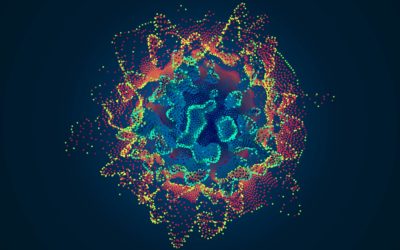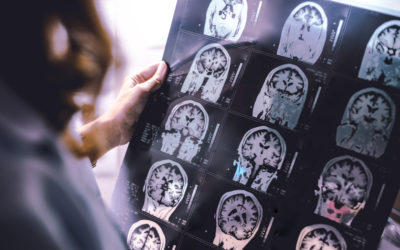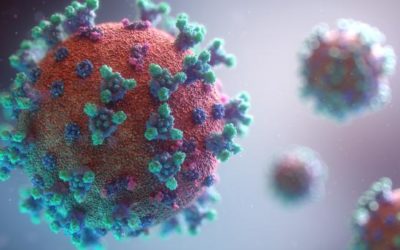
Near-death experiences have fascinated many people ever since they have been reported. And these experiences guide our view of how we die: the memories of your life passing in front of your eyes, the tunnel of light, the floating movement towards a bright light.
However, this has been difficult to research. The nature of being near to death, or briefly dead, means different things may happen in the brain that can cause hallucinations. For example, Olaf Blanke showed that out of body experiences can be induced in healthy individuals by activating and deactivating different parts of the brain.
Enter this case whereby a team of researchers around Dr. Ajmal Zemmar, a neurosurgeon based at the University of Louisville, actually managed to get EEG recordings of a person as they died.
No this was not a bizarre experiment, which is difficult to run, and would have many moral implications. They had wired up this 87 year-old who was having a severe epileptic seizure, which could be fatal, to try and see what was happening — however this individual had a DNR (do not resuscitate) status and after consulting with the family the patient passed away. This provided the only known example of a person with a quality EEG recording during death.
Obviously, it is a case of only one person who has just had a major epileptic seizure but provides the first glimpse of what is happening in the brain during death. So, you may want to know whether your life’s memories pass in front of your eyes?
Well, they did see a spike in gamma brain wave activity, and gamma waves are also associated with memory recall, shortly before death. However, a gamma spike could also mean many other things. They also noticed enhanced neuronal coherence and coupling — basically showing coordinated activity across the brain.
This case study of one person is therefore interesting, but as a population of one, difficult to draw any conclusions. However, it is a start to get the neural signature of death. What they did note however, is that death is not a sudden thing but much more drawn out than you might expect with cells and processes shutting down over minutes, and hours.
On the same topic another group of researchers around Sam Parnia have also issued a position statement on death and also near-death experiences — this summarises the research but also calls for more structured research around this to pull together these strands of evidence and give greater clarity as to how and in what form death happens and the experiences that accompany this — including those near-death experiences.
I’ll certainly be watching this space with interest.
References:
Vicente Raul, Rizzuto Michael, Sarica Can, et al.
Enhanced Interplay of Neuronal Coherence and Coupling in the Dying Human Brain
Frontiers in Aging Neuroscience: 14; 2022
DOI=10.3389/fnagi.2022.813531
Sam Parnia, Stephen G. Post, Matthew T. Lee, et al.
Guidelines and standards for the study of death and recalled experiences of death — a multidisciplinary consensus statement and proposed future directions.
Annals of the New York Academy of Sciences, 2022
DOI: 10.1111/nyas.14740
More Quick Hits
Babies born with five from seven functional brain networks
In the 1950s the blank slate theory was the most prominent theory ascribed to babies. They are born blank slates and then their experiences allow them to develop their networks thoughts, associations, etc., and just about everything else. Though this theory is long...
Social networks grow your brain
The headline is a bit “click baity” but it is what a group of researchers found. To be more specific they found in macaques (cute monkeys) in the wild that having more grooming partners grew different regions of the brain. Grooming is the primate version of having a...
What do creative brains look like?
We’d probably all be happy to be a bit more creative — though research into our own opinions show that many people do actually consider themselves to be above average in creativity. An obvious self-bias. This is where scientists who study creativity come in and find...
New gender biases discovered
There have been many studies on gender biases, and I have followed, written, and spoken about many of these biases over the years (over a decade actually) but two studies have just come out that caught my eye. One out of New York University focused on gender natural...
Growth of your brain over your life
So, we all know that our brain grows very quickly as babies and children and then after a certain age, younger than some of us may like to think, there begins a slow decline. But precisely what and how is the question. Well, this is a question that an international...
How to reduce loneliness
I have reported multiple times on loneliness during the pandemic – mostly because interest and research into loneliness has taken a large uptick. I have also reported on how to combat this and was happy to see that a piece of research just out proved what I had...
COVID on the Brain
Many COVID-19 patients have reported various neurological symptoms – the well-known brain fog, but also headaches and decreased cognitive function over months and extended periods of time. This even without serious infection or hospitalization. The research seems to...
Life satisfaction after work related to personality traits
As many of you know I have done plenty of work into personality and so found this study interesting. Dusanee Kesavayuth of Kasetsart University in Bangkok, Thailand analysed data from 2,000 adults aged between 50 and 75 in the British Household Panel Survey and found...
Unique regulation of brain in yoga practitioners
Quick HitsDaily brief research updates from the cognitive sciences es, you yoga practitioners knew you were special and here is the science to prove it! In this older study I came across (2018) participants were recruited to see how they dealt with...
Neurodivergence and the lonely brain
Quick HitsDaily brief research updates from the cognitive sciences eurodivergence is term that describes those that are not “neurotypical” such as those with autism and ADHD. In the surge of research into loneliness spurred by the pandemic it has...










